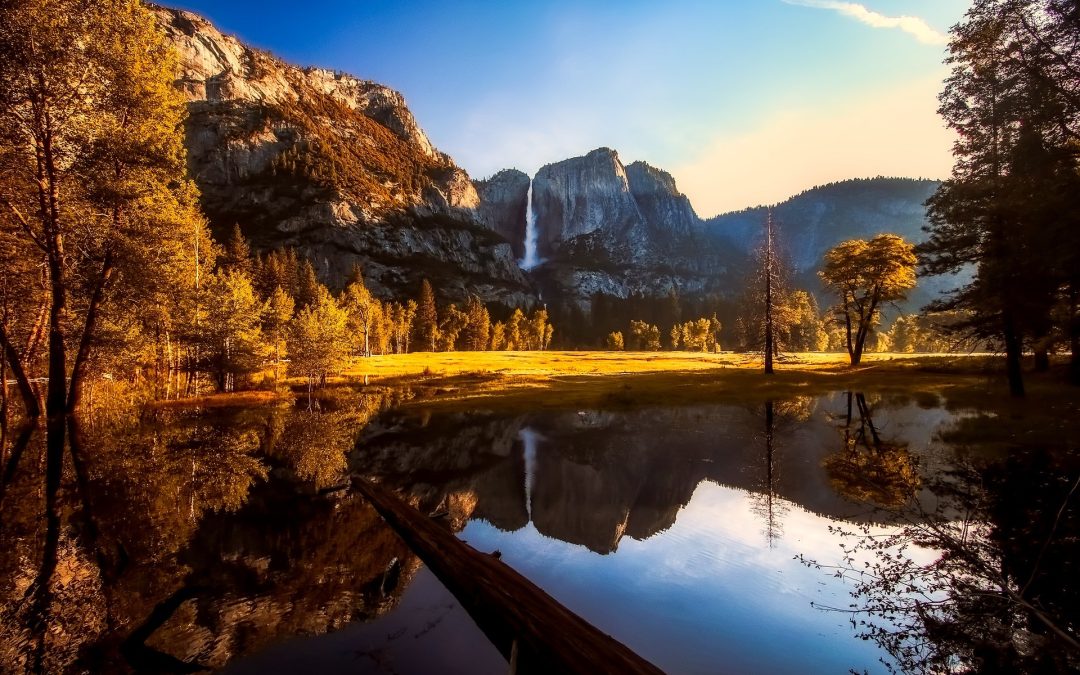Embracing the Beauty of BLM Lands
The Bureau of Land Management (BLM) oversees more than 240 million acres of public land in the United States, an expanse greater than the combined areas of Texas and California. These lands showcase diverse landscapes ranging from deserts, mountains, and forests to grasslands. They are also a sanctuary for a myriad of wildlife, including bighorn sheep, mountain lions, and eagles.
The vast expanses of BLM lands epitomize the allure of the great outdoors. But what defines the essence of these lands, and why is it crucial to be cognizant of their regulations?
At its core, the essence of BLM lands lies in their untamed nature. Unlike many areas, these lands remain largely untouched by human development, offering a rare chance to witness nature in its most pristine state. This untouched quality, however, also underscores the fragility of BLM lands, emphasizing the need for their protection. This is why understanding and adhering to the rules governing activities, especially camping, on BLM lands is paramount.
Adhering to these regulations not only safeguards the land but also ensures that future generations can revel in the splendor of BLM territories for years to come.
Here are some pivotal rules campers should familiarize themselves with:
- Certain areas of BLM lands require a permit for camping.
- Campers can only remain in one location for up to 14 days within a 28-day window.
- All trash must be packed out.
- Proper disposal of human waste is mandatory.
- Disturbing wildlife or their habitats is prohibited.
- Respect for fellow campers is essential.
By abiding by these guidelines, we play a part in preserving BLM lands, ensuring they remain accessible and enjoyable for all.

BLM: Guardians of Public Lands
What is BLM Land?
The Bureau of Land Management (BLM) stands as a pivotal federal agency responsible for overseeing public lands within the United States. Remarkably, BLM territories constitute approximately 24% of the nation’s total landmass, a vastness surpassing the combined areas of Texas and California. These lands are a mosaic of diverse terrains, from deserts, mountains, and forests to expansive grasslands. Additionally, they serve as habitats for a plethora of wildlife, including but not limited to bighorn sheep, mountain lions, and eagles.
The stewardship of BLM lands is governed by a comprehensive set of rules and regulations. These guidelines are meticulously crafted to safeguard the environment while ensuring that the public can fully appreciate and utilize these lands.
Here’s what sets BLM lands apart:
- Their vastness captures the essence of the wild and untamed.
- They showcase a diverse array of landscapes teeming with wildlife.
- They are accessible to the public for a multitude of activities, encompassing camping, hiking, fishing, and off-road adventures.
- Their management is rooted in a framework of rules and regulations, all aimed at environmental conservation.
For those intrigued by the prospect of exploring BLM lands, here are some essential pointers:
- Prior to your visit, acquaint yourself with the specific rules and regulations pertinent to your chosen destination.
- Always treat the environment and its inhabitants with utmost respect.
- Adhere to the “leave no trace” principle.
- Equip yourself adequately. Given the remote and often unpredictable nature of BLM lands, it’s wise to be prepared for any eventuality.
By understanding and respecting these guidelines, you can ensure a fulfilling and responsible experience on BLM lands.

Know the Rules, Preserve the Beauty – Image via BLM
Importance of Knowing the Rules
BLM lands, governed by a comprehensive set of rules and regulations, are curated with two primary objectives in mind: safeguarding the environment and ensuring that these lands remain accessible and enjoyable for all.
Recognizing and adhering to these rules is paramount for several reasons:
- Environmental Conservation: BLM lands are sanctuaries for a diverse range of flora and fauna, many of which are sensitive to human interference. Adherence to the rules ensures that we minimize our impact, thereby preserving these ecosystems.
- Safety and Enjoyment: Given the remote and often unpredictable nature of BLM lands, following the established guidelines ensures not only our safety but also that of others, making the experience enjoyable for all.
- Avoiding Legal Repercussions: Ignorance or disregard of the rules can lead to fines and penalties. Being well-informed helps in circumventing these undesirable outcomes.
Here’s a concise rundown of some pivotal regulations to be aware of:
- Certain regions within BLM lands mandate a camping permit.
- Campers are restricted to a single location for up to 14 days within a 28-day span.
- All waste, including trash, must be packed out.
- Proper disposal of human waste is non-negotiable.
- Disturbance to wildlife or their habitats is strictly prohibited.
- Mutual respect among campers is a given.
By internalizing and abiding by these guidelines, we play an instrumental role in preserving the integrity of BLM lands, ensuring they remain a cherished destination for all.

14 Days: Maximize Experience, Minimize Impact Image by tigerlily713 from Pixabay
BLM Camping Restrictions: Understanding Duration
The Bureau of Land Management (BLM) has instituted a specific duration limit for camping on the majority of its territories: a maximum of 14 days within any given 28-day window. This stipulation is not arbitrary but is rooted in the agency’s commitment to environmental conservation and the optimal utilization of camping spots.
While this 14-day rule is widely applicable, there are exceptions. Certain designated group sites or areas with high camping demand might have distinct duration limits.
The rationale behind BLM’s enforcement of these camping limits includes:
- Environmental Preservation: Prolonged camping can inadvertently harm local vegetation and disrupt the natural habitats of wildlife.
- Optimal Campsite Usage: Habitual camping in the same location can degrade the site’s quality, diminishing its appeal for subsequent campers.
- Equitable Access to Public Lands: By imposing a camping duration limit, BLM ensures that its lands remain accessible to a broader audience, allowing more individuals to experience their beauty.
For those considering a camping expedition on BLM territories, it’s essential to be well-informed about these duration restrictions. Comprehensive details about these limits and other related guidelines can be accessed on the BLM website.
When embarking on a BLM camping adventure, here are some best practices to adhere to:
- Opt for pre-established campsites to minimize environmental impact.
- Ensure all trash is packed out, leaving no trace behind.
- Properly manage and dispose of human waste.
- Exercise caution and respect towards the local wildlife and their habitats.
- Maintain a low noise level and be considerate of fellow campers.
By internalizing and practicing these guidelines, campers play a pivotal role in conserving the integrity of BLM lands, ensuring they remain a treasure for all to relish.

Image by mandyg21c from Pixabay
BLM Land Etiquette: Respect Mother Nature
BLM lands represent a treasured expanse that demands our respect and care. To ensure that our camping adventures on these lands are both enjoyable and environmentally conscious, here are some guidelines to consider:
- Adhere to the Leave No Trace Principles: The Leave No Trace principles provide a framework for outdoor ethics, emphasizing minimal environmental impact. Key tenets include packing out all waste, ensuring proper disposal of human waste, and being cautious with campfires.
- Champion Wildlife and Their Habitats: BLM lands are teeming with diverse wildlife. It’s crucial to respect their spaces, avoiding sensitive zones like nesting areas or wildlife corridors. Additionally, refrain from feeding or unnecessarily disturbing animals.
- Foster a Community Spirit with Fellow Campers: Remember, BLM lands are communal spaces. Extend courtesy to other campers by maintaining low noise levels, adhering to designated trails, and ensuring cleanliness.
Further recommendations for a responsible camping experience on BLM lands include:
- Opt for pre-existing campsites to minimize environmental disruption.
- Be diligent in packing out all waste, encompassing food remnants and even biodegradable items like toilet paper.
- When disposing of human waste, bury it a minimum of 6 inches deep and maintain a distance of at least 200 feet from water sources, trails, and camping areas.
- Consider using a camp stove for cooking. If you do opt for a campfire, ensure it’s small, controlled, and in a designated fire ring or pit.
- Maintain a harmonious environment by being considerate and quiet, especially during nighttime hours.
By embracing these guidelines, we play an active role in preserving the sanctity of BLM lands, ensuring they remain a haven for all nature enthusiasts.
BLM Permits: Know Before You Go
Embarking on a camping journey within BLM lands necessitates a bit of prior homework, especially concerning permits. While many BLM territories are open without the need for permits, certain areas—often those that are particularly popular or ecologically delicate—do mandate them.
The BLM website is a comprehensive resource for discerning whether a permit is required for your chosen location. It also provides details about permit costs and the application procedure.
Here’s a concise overview of BLM permits:
- Not every BLM area mandates a permit, but some do.
- The cost associated with permits can differ based on the specific area.
- The permit application process isn’t uniform and can vary by location.
- Permits can typically be procured online or via mail.
- While most areas necessitate securing a permit in advance, a few locations offer on-the-spot permits at entry points.
Being well-informed about BLM permits is a cornerstone of ensuring a seamless and enjoyable camping experience.
For those navigating the BLM permit process, here are some handy pointers:
- Plan Ahead: Given the high demand for permits in certain areas, it’s prudent to initiate your planning well in advance.
- Peruse Permit Details: Each BLM territory can have unique permit stipulations. Ensure you’re well acquainted with the specifics of your chosen location.
- Application Process: Whether you’re applying online or via mail, the BLM website offers a step-by-step guide to streamline the process.
- Carry Your Permit: Once you’ve secured your permit, ensure it accompanies you on your trip. You might need to present it at the entry or during your stay.
By adhering to these guidelines and ensuring you have the necessary permits, you’re setting the stage for a memorable and hassle-free adventure on BLM lands.
Conclusion: The Essence of Responsible Camping
Camping offers a profound avenue to immerse oneself in the embrace of the outdoors and forge a deeper bond with nature. Yet, this privilege comes with a responsibility: to tread lightly and ensure our adventures don’t mar the pristine beauty of our surroundings. By adhering to established guidelines, we play a pivotal role in preserving the sanctity of BLM lands for posterity.
Here are the salient points to remember from our discussion:
- BLM lands are invaluable treasures, deserving of our utmost respect and care.
- The Leave No Trace principles serve as a compass for environmentally-conscious camping, guiding us to minimize our footprint.
- Wildlife and their habitats are integral to the BLM ecosystem; it’s our duty to ensure their safety and well-being.
- Mutual respect among campers fosters a harmonious environment, enhancing the experience for all.
- Familiarize yourself with permit requirements and ensure compliance where necessary.
- By internalizing and practicing these guidelines, we collectively ensure that BLM lands remain a haven for nature enthusiasts in the years to come.
In essence, responsible camping isn’t just about following rules; it’s about cherishing and safeguarding the natural wonders that enrich our lives.
FAQs
-
- BLM’s Official Website: The official website of the Bureau of Land Management offers comprehensive details about the lands they manage, their mission, and the rules and regulations for visitors.
- Leave No Trace Principles: The Leave No Trace Center for Outdoor Ethics provides essential guidelines for outdoor enthusiasts, emphasizing minimizing human impact on nature.
- National Geographic on BLM Lands: National Geographic offers insightful articles and features on the beauty and significance of BLM lands, emphasizing their importance to the natural ecosystem.
- U.S. Government Publishing Office – BLM Regulations: The U.S. Government Publishing Office provides official publications on BLM regulations, ensuring campers and visitors have access to the most up-to-date rules.
- Outdoor Project’s BLM Camping Guide: Outdoor Project offers practical guides for campers looking to explore BLM lands, including tips, rules, and best practices for a safe and enjoyable experience.
Featured Image by David Mark from Pixabay

